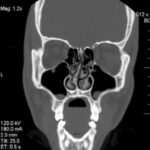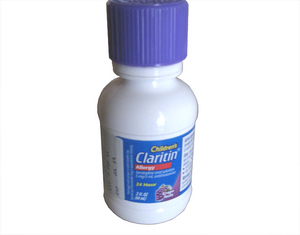Breathing seems so natural (to those of us who don’t have respiratory problems) that it’s almost taken for granted.
Most of us consider the lungs to be the respiratory system but by the time air reaches the main lung areas it’s passed through the nasal cavity, nasopharynx (at the back of the nasal cavity), mouth or oropharynx, larynx, trachea, main bronchus and bronchiole.
The nasal cavity is two separate parts separated by the septum or nose cartilage. The nasal cavity lies between the palate (top of the roof of the mouth) and the floor of the cranium. This is the primary area where the air we breathe is warmed and moistened. From there air goes to nasopharynx, the soft palate at the back of the nasal cavity and top of the throat, for more warming and moistening. Mucus is present in the entire respiratory system not only to moisten the air but also to catch and trap dust particles and other foreign substances before they can reach the lungs. A runny nose is a messenger and has its purpose. Stopping Nature’s messenger can have dire consequences. The larynx is the organ where our voice originates, and acting as a passageway for air, connects the pharynx and the trachea.
The trachea is situated at the front of the neck and is made up of a framework consisting of nine different cartilage. The epiglottis is a small leaf shaped membrane situated immediately behind the root of the tongue and covers the larynx during swallowing. The thyroid cartilage is covered in my article on the thyroid under endocrine glands. The arytenoid consists of two pyramid shaped cartilage that lie at the back of the larynz at the upper edge of the cricoid. The cricoid is shaped like a signet ring and forms part of the anterior and lateral walls, as well as most of the posterior walls, of the larynx. The corniculate and cuneiform cartilage articulates with the metatarsal bones. These various parts and pieces make it possible for speech, swallowing and other functions while the head is turning, moving side to side and pitched forward and back.
The bronchus is any of the trachea that has cartilage and mucus glands in its walls. The main bronchus splits into two bronchi, one going to either lung. From there the bronchi divides into multiple smaller bronchiole, none of which contain cartilage or mucus glands in their walls. There are multiples of bronchioles that conduct air to the acinus, or small sac, which is the lung as we generally think of it.
Breathing through the mouth bypasses a large portion of the warming, moisturizing and particle elimination from the air before it reaches the lungs and other highly sensitive areas of the respiratory system. Breathing through the mouth also triggers the fight or flight response and the brain sends signals to the glands to secrete hormones, two of which are hydrocortisone (cortisone) and epinephrine (adrenaline).
The release of the hormones cortisone and adrenaline, causes changes in the body including elevated heart rate and blood pressure. The points here are many including how we exercise. If we chose to exercise beyond the comfort zone and have to pant or breathe through the mouth, we’ve entered the areas of fight or flight and general discontent concerning an exercise program. Exercise can assist in anti-aging but can also speed the aging process/sickness cycle if we choose the wrong exercise or go beyond our comfort zone.
The process of breathing does more than just allow air in and out of the lungs. With every breath lymph is pumped, blood is rejuvenated, the stomach moves assisting in digestion and the heart and other internal organs are massaged and stimulated. Each breath passes through or over lymph tissue and millions of hair like projections called cilia that filter, re-filter and remove any particles that may damage the lungs. The respiratory system connects the inner body to the outer atmosphere. The lungs contain miles of air passages.
The entire system could be likened to an upside down tree with two main branches, one on either side. As the tree branches out the parts get smaller and more numerous with the final parts being smaller that a human hair. Blood circulates around the microscopic parts of the lungs picking up oxygen in the hemoglobin ring of red corpuscles for delivery to the cellular level. An inadequate supply of water, and/or iron, in the blood stream restricts the amount of oxygen that will be absorbed by the hemoglobin ring. Sodas, beer, wine and sports drinks can’t take the place of water. No matter how large the lungs if there is inadequate water and/or iron, the cellular level will be starved for oxygen.


